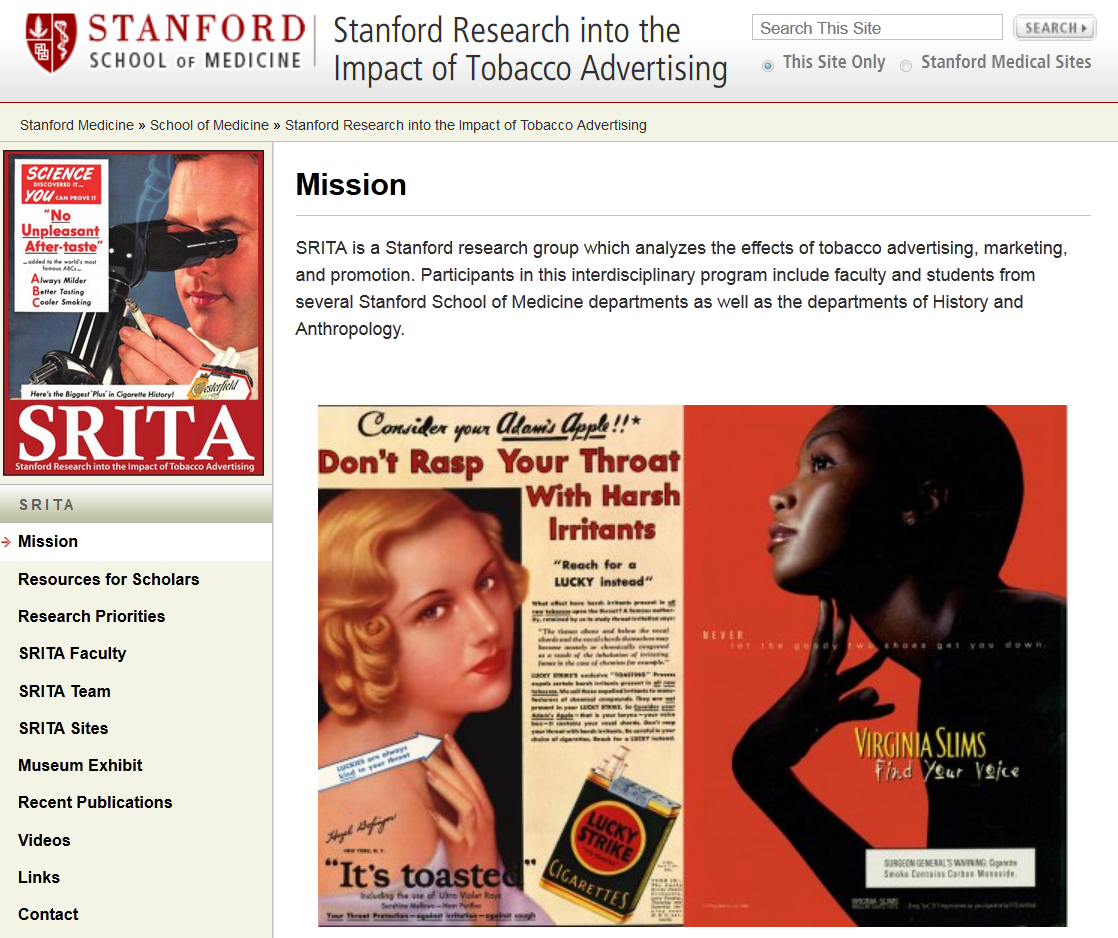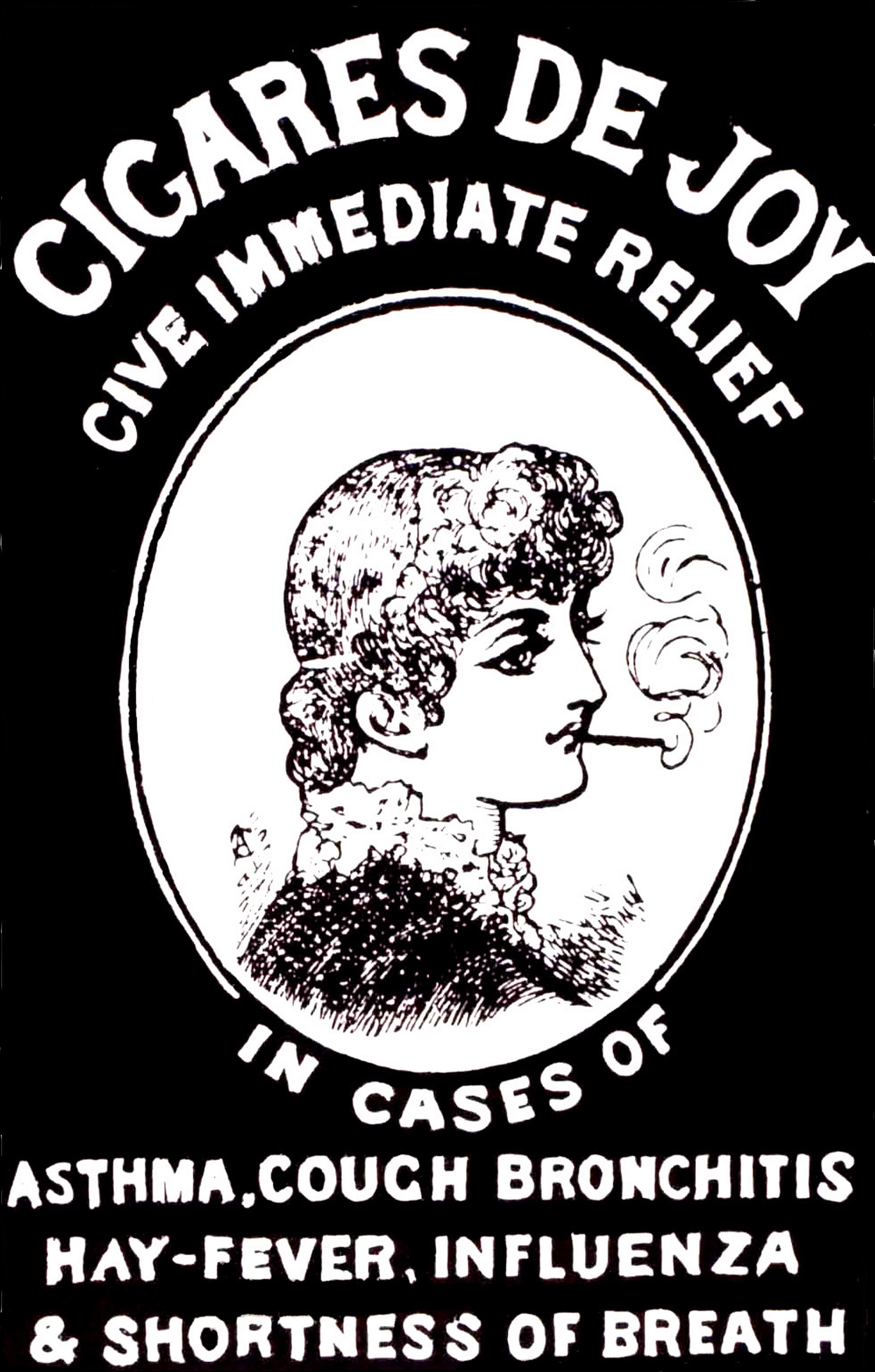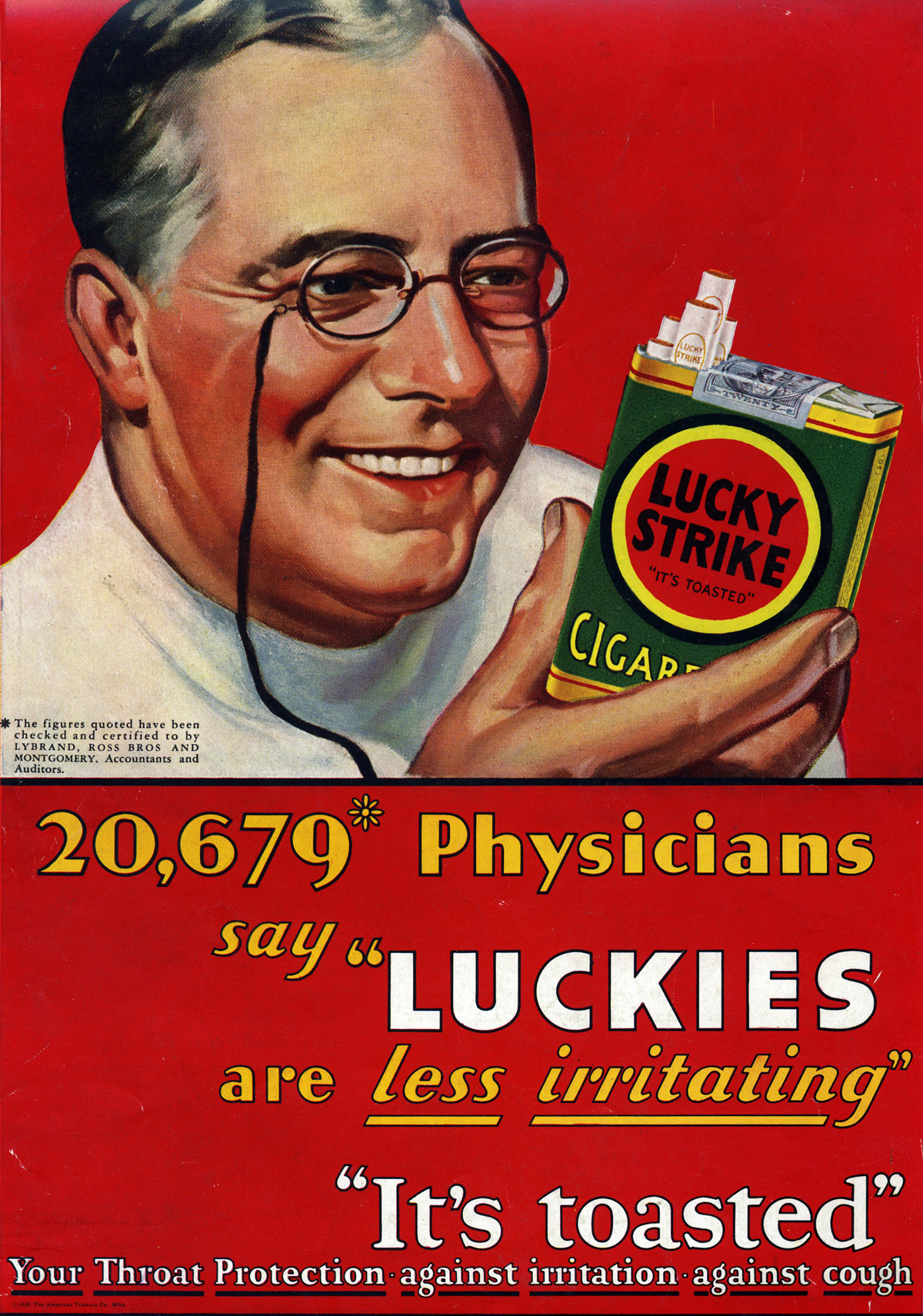Portfolio Of Ads
Stanford School of Medicine (curators)

WEB SITE Stanford School of Medicine, site for Stanford Research into the Impact of Tobacco Advertising, which includes an annotated gallery of vintage ads.
The following vintage cigarette ads from the 1920s to 1950s feature medical professionals and others extolling the safety and health benefits of cigarettes. The ads are part of an online gallery of vintage cigarette ads curated by Stanford Research into the Impact of Tobacco Advertising, a research group at Stanford School of Medicine.
Immediate relief in cases of asthma, cough, bronchitis. . . .
What does this ad suggest to you about the cultural moment (1881) it was created in?

ADVERTISEMENT Wilcox and Company, “Cigares de Joy.” This 1881 cigarette advertisement promotes an early brand and makes claims about the product’s medicinal uses, claims that major cigarette manufacturers continued to make through the 1950s.
Reach for a Lucky instead of a sweet.
What assumptions about women are built into this ad?

ADVERTISEMENT American Tobacco Company, “Lucky Strike” cigarettes. In 1929, the makers of Lucky Strikes ran a campaign that targeted women and focused on body image, promoting smoking as a way to control the appetite.
Your throat protection against irrigation, against cough.
How persuasive is the number of physicians (20,679) and the use of “accountants and auditors”? Also, why didn’t the ad maker round up to or down to an even number?

ADVERTISEMENT American Tobacco Company, “Lucky Strike” cigarettes. In 1930, the makers of Lucky Strikes claimed that “20,679 Physicians say ‘Luckies are less irritating.’” Note the asterisked text: “The figures quoted have been checked and certified to by Lybrand, Ross Bros, and Montgomery, accountants and auditors.” Images of medical professionals appeared in ads for smoking well into the 1940s. One 1946 ad by the manufacturer R. J. Reynolds claimed that “More doctors smoke Camels than any other cigarette.”
Why did the ad creators choose to make the baby and cigarette images so large?

ADVERTISEMENT Philip Morris & Company, “Marlboro” cigarettes. Cigarette makers, including Philip Morris, often used images of mothers and children to make cigarette smoking seem to be a safe, baby-friendly household activity. This ad circulated in 1951.
More scientists and educators smoke Kent.
Why did the ad creators present this ad in an urban setting?

ADVERTISEMENT P. Lorillard Tobacco Company, Kent cigarettes Strike” cigarettes. By 1960, cigarette makers began to bring “science” into the mix, citing studies done by “research institutes” funded by the tobacco industry itself.
Always Buy Chesterfield . . . MILDER much
MILDER.
Why did the ad creators choose a major athlete to sell the idea that Chesterfields are “milder”?

ADVERTISEMENT Liggett & Myers Tobacco Company, Chesterfield cigarettes. Cigarette makers began advertising to directly to African Americans in the 1950s, largely using images of black athletes to sell their products. In this 1950 ad, baseball legend Jackie Robinson appeals to readers with his “tip” in support of Chesterfields.
Tailored slim to fit your hands and your lips.
What is the overall argument being made in this ad? What attitudes toward women does it reveal?
What are some of the secondary messages being communicated in this ad?

ADVERTISEMENT Philip Morris & Company, Virginia Slims. Cigarette companies had long targeted women through their advertising, but during the rise of feminism in the 1970s, they took a different tack. This 1971 ad attempts to appeal to women with a product that is tailored, slim, and “just for women.” The famous slogan, “You’ve come a long way, baby,” suggests a link between cigarette smoking and women’s rights.







